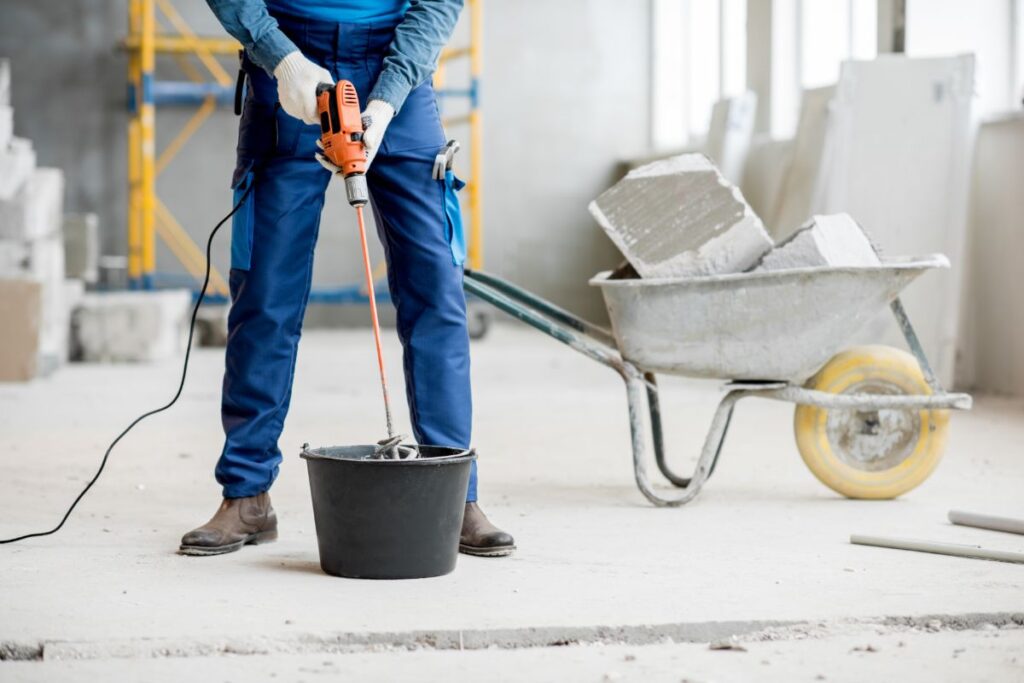Breaking Ground: Exploring Innovative Techniques in Concrete Repair
by siteadmin

Concrete, the backbone of modern infrastructure, is subjected to relentless wear and tear over time. From cracks and spalling to corrosion and structural weaknesses, concrete degradation poses significant challenges to the longevity and safety of our built environment. However, advancements in technology and engineering have paved the way for innovative techniques in concrete repair, offering efficient, durable, and sustainable solutions. In this blog post, we embark on a journey to uncover some of the most groundbreaking approaches revolutionizing the field of concrete repair.
Self-Healing Concrete:
Imagine concrete that can mend its own cracks—a feat once confined to the realm of science fiction is now a reality. Self-healing concrete incorporates various mechanisms to autonomously repair cracks that develop over time. One approach involves the incorporation of encapsulated healing agents within the concrete matrix. When cracks form, these capsules rupture, releasing healing agents such as calcium carbonate, which react with moisture and carbon dioxide from the atmosphere to form insoluble calcium carbonate, sealing the crack. Another method utilizes bacteria embedded in the concrete mix, activated upon crack formation to produce calcite, thereby closing the void.
Advanced Composite Materials:
Fiber-reinforced polymers (FRP) and carbon fiber reinforced polymers (CFRP) have emerged as game-changers in concrete repair and strengthening. These lightweight, high-strength materials are applied externally or internally to reinforce and strengthen concrete structures. FRP and CFRP systems offer numerous advantages, including rapid installation, minimal disruption to the structure, and exceptional durability. Additionally, their corrosion-resistant properties make them ideal for combating the effects of chemical degradation and corrosion in concrete elements.
Nanotechnology Solutions:
Nanotechnology holds immense promise in revolutionizing concrete repair by enhancing its mechanical properties and durability on a molecular scale. Nanoengineered materials, such as nanoparticles and nanofibers, can be incorporated into concrete formulations to improve its strength, ductility, and resistance to deterioration mechanisms such as chemical attack and abrasion. Furthermore, nano-based surface treatments can impart hydrophobic or self-cleaning properties to concrete, reducing moisture ingress and mitigating the effects of environmental exposure.
Robotics and Automation:
The integration of robotics and automation technologies is transforming the way concrete repair and maintenance tasks are executed. Robotic systems equipped with advanced sensors and algorithms can perform tasks such as crack detection, surface preparation, and application of repair materials with precision and efficiency. These robotic solutions not only enhance the quality and consistency of repair work but also improve safety by reducing the need for human intervention in hazardous environments.
3D Printing:
3D printing, also known as additive manufacturing, has the potential to revolutionize concrete construction and repair by enabling the rapid prototyping and fabrication of complex geometries. In concrete repair applications, 3D printing can be used to produce customized formwork, prefabricated structural components, and intricate architectural elements with high precision and efficiency. This technology streamlines the repair process, minimizes material waste, and offers greater design flexibility, paving the way for innovative solutions in concrete rehabilitation.
Innovation lies at the heart of progress, and the realm of concrete repair is no exception. From self-healing concrete to robotic systems and advanced composite materials, the landscape of concrete rehabilitation is undergoing a profound transformation driven by technological advancements and creative engineering solutions. As we embrace these innovative techniques, we not only extend the lifespan of our infrastructure but also redefine the possibilities for sustainable, resilient, and future-ready construction practices. Through collaboration and continued investment in research and development, we can usher in a new era of excellence in concrete repair, shaping a built environment that stands the test of time.
Concrete, the backbone of modern infrastructure, is subjected to relentless wear and tear over time. From cracks and spalling to corrosion and structural weaknesses, concrete degradation poses significant challenges to the longevity and safety of our built environment. However, advancements in technology and engineering have paved the way for innovative techniques in concrete repair, offering…
Recent Posts
- Roofing Company Savannah Sheds Light on the Lifespan of Roofs: How Long Should a Roof Last?
- Cost of Installing a Pool in Cape Coral, Florida: A Rough Guide
- Overland Park KS Painters Provides Insight: Essential Questions to Ask Your House Painter
- Is Stamped Concrete Cheaper than Regular Concrete? Debunking Myths with Columbus Stamp Concrete
- New Orleans Concreters Advocates for Stamped Concrete Driveways as the Ultimate Choice for Durability and Style
